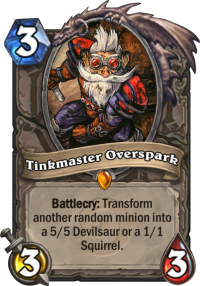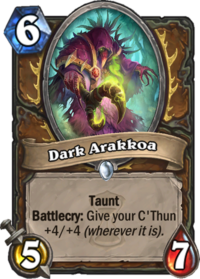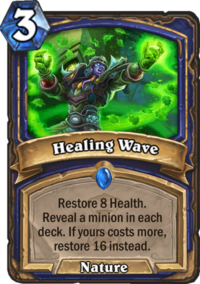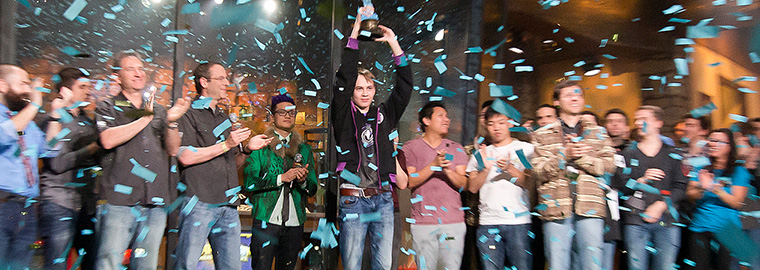Introduction
A new Hearthstone Champion has been crowned. It’s no one else, but the 18 years old Russian player, Pavel, who inherited the Ostkaka’s title. Pavel, the Malygos Druid slayer. After taking the $250,000 prize home, he will remain our champion until the next year’s Blizzcon.
The Top 8 of the Hearthstone World Championship took place at this year’s Blizzcon (4-5th of November) and it was a really exciting event. With a few surprises like the champion’s comeback (again!), missed lethal and an all-EU Finals, I really recommend you to watch it yourself. But for all of you who don’t have the luxury of going through the hours of gameplay + for the viewers interested in statistics, I’ve prepared this article. Below you will find stats on win rates, bans, class distribution and more!
Summary
Finalists Region Breakdown
- Americas: Cydonia, Amnesiasc, HotMEOWTH
- Europe: DrHippi, Pavel
- China: JasonZhou, Hamster
- Asia-Pacific: Che0nsu
Top 8 Final Bracket
VoDs
- Quarterfinals #1 – Jasonzhou vs Hamster
- Quarterfinals #2 – Amnesiasc vs Pavel
- Quarterfinals #3 – DrHippi vs HotMEOWTH
- Quarterfinals #4 – che0nsu vs Cydonia
- Semifinals #1 – Jasonzhou vs Pavel
- Semifinals #2 – che0nsu vs DrHippi
- Finals – Pavel vs DrHippi
Note: This time around, sample size is much lower. About 3 times lower, to be precise. That’s why you should take those stats with a grain of salt. You should treat it more as a curiosity than real data.
Player Statistics
Best Player Performance
- Pavel – 63.2% win rate (12-7)
- DrHippi – 62.5% win rate (10-6)
- che0nsu – 54.5% win rate (6-5)
Worst Player Performance
- HotMEOWTH – 0% win rate (0-4)
- Cydonia – 20% win rate (1-4)
- Hamster – 33.3% win rate (2-4)
General Player Stats
- Most games played: Pavel – 19 games*
- Least games played: HotMEOWTH – 4 games
- Biggest win rate improvement**: DrHippi, +12.5% win rate
- Biggest win rate drop**: HotMEOWTH, -66.6% win rate
*It was possible to play a maximum of 21 games.
**Compared to Group Stage
Ban Statistics
- Shaman – 11 out of 14 – 79%
- Druid/Rogue/Warlock – 1 out of 14 – 7%
Back in the Group stage, Shaman was targeted by bans “only” 55% of time. While still a huge number, it grew even further in the Finals. I guess people didn’t want to deal with the Shamans when the stakes are so high. Only 3 times did people decide to ban something else instead:
- Hamster banned Jasonzhou’s Miracle Rogue in Quarterfinals. His lineup was very vulnerable against Miracle Rogue, especially the Priest and Paladin.
- HotMEOWTH banned DrHippi’s Malygos Druid in Quarterfinals. Maybe he saw Druid as the counter to his secret weapon deck, Blood Warrior? Otherwise I don’t see a reason to priority Druid ban over Shaman ban here.
- DrHippi banned che0nsu’s Discard Zoo Warlock in Semifinals. Zoo has good matchups against 2 of the DrHippi’s decks – Malygos Druid and Tempo Mage, so that’s probably why he decided to ban it over Shaman. But it seems like the Shaman also has good matchups against those decks…
In the end, I wouldn’t have been surprised to see 14 Shaman bans. Because even the 3 cases where Shaman wasn’t banned, it’s not like it would have bee a bad decision to do so.
Because of all the bans, even though each player brought a Shaman deck, it was one of the most underrepresented classes, with only 4 Shaman games played in total.
Class Statistics
These results will be much less reliable than the ones from Group Stages. There were more decks with a very small sample size here. I actually thought about combining the stats together to make a big summary of the Group Stages + Finals, it might increase the already fine Group Stage’s sample size. But for now, these are stats from the Top 8.
Classes Win Rate
- Warlock – 87.5% win rate (7-1)
- Shaman – 75% win rate (3-1)
- Mage – 58.3% win rate (7-5)
- Druid – 52.9% win rate (9-8)
- Paladin – 50% win rate (1-1)
- Warrior – 37.5% win rate (9-15)
- Rogue – 33.3% win rate (3-6)
- Hunter – 25% win rate (1-3)
- Priest – n/a (0-0)
Total matches played: 40
Most Popular Classes
- Warrior – 24 out of 80 (30%) decks played in total
- Druid – 17 out of 80 (21.3%) decks played in total
- Mage – 12 out of 80 (15%) decks played in total
Least Popular Classes
- Priest – 0 out of 80 (0%) decks played in total
- Paladin – 2 out of 80 (2.5%) decks played in total
- Hunter/Shaman – 4 out of 80 (5%) decks played in total
This time around, the results are almost completely flipped around. With the exception of Mage, who kept pretty much the same result. Rogue, Warrior and Hunter were the other 3 classes with the highest win rate, while this time around those are the 3 classes with the LOWEST win rate. And vice versa – Warlock, Shaman and Druid*, who had the lowest win rate in Group Stages, now all have good win rates.
*Druid’s win rate would be even higher if not for the Pavel’s 4-0 sweep against Amnesiasc’s Druid. Besides that, Druid was doing really well for most of the players.
I mostly blame the sample size, so I don’t want to draw any big conclusions, but two things still surprised me. The first one is the great Warlock performance. It was really interesting that 5 players have decided to bring the Discard Zoo Warlock, and this decision turned out to be really good for them. Discard Zoo Warlock lost only 1 game throughout the whole tournament – and that one game was in the Finals (vs Pavel’s Tempo Mage, the matchup was in Zoo’s favor).
The second one is the poor performance of Warrior. I’ve praised Warrior as the most consistent class last time around. Especially C’Thun Warrior, which has performed really well, but the other Warrior archetypes weren’t that bad either. This time, Warrior’s win rate was horrible. It can be partially blamed on the HotMEOWTH’s Blood Warrior, which didn’t perform well and ended up going 0-4. But still, even if you don’t count those 4 loses, Warrior was still 9-11.
Also, I’d say that in the few games where Shaman wasn’t banned, it showed really why it SHOULD be banned. The only game Shaman lost was vs DrHippi’s Malygos Druid, but that game was extremely close. And I mean it – it could really have gone either way. DrHippi got saved by an amazing Yogg (when he was dying to Bloodlust next turn) and then Che0nsu still had a chance to topdeck lethal.
Deck Statistics
A List of all the Decks from the Top-8 of the Hearthstone World Championships
Most Popular Decks
- Midrange Shaman – Brought by 8 out of 8 players (100%)
- Malygos Druid – Brought by 7 out of 8 players (87.5%)
- Tempo Mage – Brought by 6 out of 8 players (75%)
Most Interesting Decks & Tech Choices
I’ve decided to leave out the Hamster’s decks, because I’ve already talked about them in the Group Stage article and there is no point in repeating the same thing over again. Since we didn’t have as many unique decks this time (I don’t blame the players, you usually want to bring the most consistent & tested decks), instead of focusing only on the decks as a whole, I’ll also point out some interesting tech cards we’ve seen throughout the Finals.
#1 – HotMEOWTH’s Blood Warrior – Whole Deck
Just like Hamster has surprised us when he brought Paladin and Priest to the Group Stage, we kinda expected he would do that again for the Finals. But no one expected HotMEOWTH to switch out his C’Thun Warrior for Blood Warrior. The deck itself is very unique and very rare on the ladder. It was semi-popular right after Arcane Giant’s release in Karazhan, especially before the Charge and Execute were changed.
It’s a really weird deck and someone who has never seen it before would probably ask – what’s the win condition? And well, the answer is that it is hard to pilot the deck correctly. The main “combo” is getting Arcane Giants down to low mana, playing both, using a Whirlwind effect to damage them, playing Blood Warriors, having two more free (or almost free) 8/8’s in the hand. In a lot of the matchups, play them right away and with 2x 8/7 and 2x 8/8 on the board, you should win next turn.
Then, there are also other win conditions. Elise Starseeker for the control matchups (you can’t win against e.g. Control Warrior with only the Giants), Wild Pyromancer board clears against Aggro (you win against Aggro just by staying alive most of the time), a single Grim Patron to do some board flooding, even 2x Armorsmith to win in the matchups where gaining Armor = winning, e.g. against Freeze Mage (you set up a huge Armorsmith turn in the late game, get 40+ armor and Mage can’t kill you).
Sadly for HotMEOWTH, the deck didn’t pefrom that well. In his Quarterfinals series against DrHippi, the Warrior was wiped 0-4. HotMEOWTH had gone all-in on the Warrior plan. And it wasn’t necessarily wrong – after all, he would need to win with the deck eventually. But in the end, even though some games were close and often 1 more turn was all that was necessary to stabilize and turn the game around, he was never given the opportunity to show what this deck is really capable of. And in the end, C’Thun Warrior might have been the better option.
#2 – DrHippi’s Dragon Warrior – Whole Deck
At this point, we had all kinds of Dragon Warriors. Aggro, Midrange, Control. With a lot of different techs and card choices. But DrHippi has presented a very unique take on the most popular version of this archetype – a Midrange, heavy tempo Dragon Warrior. I’ll try to go over all the unique choices he made in his deck.
First of all – Blackwing Technician. Why is it weird, you might ask? After all, it was often played in the Dragon decks. Sure, but rarely in Dragon Warrior. The thing is, Warrior already has strong 3-drops and Blackwing Technician was sometimes played as a 1-of, but more often than not dropped altogether. DrHippi is playing two copies, one in favor of Fierce Monkey, trading the Taunt and consistency for the 1 extra health.
Then, Arathi Weaponsmith & Malkorok. Those two were a pretty common tech cards in Midrange Warrior decks, back in the early WoG meta, when Tempo Warrior was really popular. But we haven’t really seen them in Dragon Warrior too much. Both give Dragon Warrior access to extra weapons. And weapons = tempo or face damage, depending on what do you need. It’s hard to fit anything besides Fiery War Axe into a Midrange Warrior deck, and those two give you access to extra weapons when necessary.
And last one – Inner Rage. I haven’t seen this card in a while. It was extremely common in the Patron Warrior, but since Patron isn’t popular, this card was also “dead”. However, Dr. Hippi has decided to bring it to his Dragon Warrior deck. There are two main purposes of this card – more damage and activating Grommash Hellscream. More damage = when you already have something ready to attack or a Charge minion on the board, Inner Rage it and hit. Sure, it loses 1 health, but it’s 2 extra damage for 0 mana. And if it stays on the board, it’s 2 more extra damage for each turn. Even more with Frothing Berserker on the board (as it adds +1 Attack to it). Second use is the finishing move. Often the biggest issue with Dragon Warrior is closing the games out. In the mid/late game, you might start running out of steam, and that gives your opponent a way to comeback. That’s why closing the game as soon as possible is important and that’s why turn 8 Grommash + Inner Rage is probably the best finisher. 12 immediate face damage and if that’s not enough, a 12/8 body on the board.
Overall, the deck was quite interesting. It seems like DrHippi tried to take his Dragon Warrior to the roots, adding some cards that weren’t played in a while. And it worked really well, because the deck ended up going 3-0 – it was the only Dragon Warrior deck with a good score.
#3 – Cydonia’s Control Warrior – Tinkmaster Overspark

Back in the Beta, when the card used to be targeted instead of random, it was a staple in most of the decks. Right now it’s much more risky, since the effect is random, but it’s still the same idea. While some classes have natural access to “polymorph” effects (Polymorph, Hex) that negate any Deathrattles + prevents from summoning the minions back, other classes like Warrior have to improvise. There are a few ways to utilize Tinkmaster’s effect. To prevent a minion’s Deathrattle from happening + preventing it from being respawned through N'Zoth, The Corruptor. So you can play it vs e.g. Cairne Bloodhoof. Then, it’s a way to deal with C'Thun and prevent it from being shuffled back into the deck with Doomcaller. That’s the main C’Thun Warrior’s win condition in slow matchups, so you should win the game if you do that (of course if the C’Thun Warrior doesn’t Shield Slam his own win condition right away). And last, but not least, it’s also a way to deal with a big minion that would be hard to deal with otherwise. I mean, minions so big that even turning them into a 5/5 is an improvement. Stuff like Giants, Ragnaros the Firelord or Malygos. But you also have a 50/50 chance to just neutralize them straight away by turning them into 1/1.
The card is risky, because it works well only vs a single minion on the board. If enemy has 3 minions on the board already and then he drops something you want to hit, you now have only a 1/4 chance to do so. It makes it a really situational tech, although it can come handy from time to time.
#4 – Pavel’s Malygos Druid – Dark Arakkoa

While we have already seen Dark Arakkoa outside of C’Thun decks, the Taunt of choice in Malygos Druid was usually the Ancient of War. But Pavel has decided to go with 2x Dark Arakkoa instead. Two biggest difference between those are: 1 mana and 3 health. Ancient of War costs 1 more mana, but has 3 more health, so it’s harder to get through.
The biggest advantage of Dark Arakkoa over Ancient of War, however, is that it fits the curve better. You can play it one turn earlier and one turn might be a big deal against some decks. Then, after playing a turn 2 Wild Growth, you can play a t3 Innervate + Dark Arakkoa straight away, while you can’t do that with AoW. On 10 mana, you can drop 2x Dark Arakkoa with Innervate when you need a huge Taunt wall. It’s also easier to fit a removal into a Dark Arakkoa turn – e.g. at 10 mana you can also play Swipe, 2x Wrath and such.
So in the end, Ancient of War is stronger, but Dark Arakkoa is more flexible, because it costs 1 less mana. Maybe it was one of the reasons why Pavel’s Druid went 3-0.
#5 – Che0nsu’s Midrange Shaman – Healing Wave

When playing against Midrange Shaman, there is one thing you don’t expect – healing. That’s why burn damage is one of the ways to win against Shaman. Che0nsu tried to nullify that one weakness by playing Healing Wave, something I think I have never seen on the ladder.
The tech works really nicely in some matchups, like against Tempo Mage or Zoo Warlock, where every point of life is precious, because it can go away really fast. While winning the joust isn’t very consistent, over 50% of the deck’s minions cost 4 mana or more, so it happens.
That’s a pretty specific tech card and I don’t think that it will catch on the ladder, because Shaman’s best defense mechanic is great early/mid game tempo, which forces the opponent to deal with the minions instead of dealing face damage.
Most Consistent Decks*
- Pavel’s Malygos Druid – 3-0
- DrHippi’s Dragon Warrior – 3-0
- Pavel’s C’Thun Warrior – 3-1
- DrHippi’s Zoo Warlock – 3-1
- JasonZhou’s Malygos Druid – 2-1
*At least 66% win rate with 3+ games sample size.
Least Consistent Decks*
- HotMEOWTH’s Blood Warrior – 0-4
- Amnesiasc’s Malygos Druid – 0-4
- Hamster’s C’Thun Warrior – 0-3
- Cydonia’s Midrange Secret Hunter – 0-3
- Che0nsu’s Dragon Warrior – 1-4
- DrHippi’s Malygos Druid – 1-3
- JasonZhou’s Dragon Warrior – 1-3
*25% or less win rate with 3+ games sample size.
Decks That Were Never Played*
Every Midrange Shaman besides JasonZhou’s, DrHippi’s and Che0nsu’s – 5 out of 8 Midrange Shaman decks weren’t played even once.
- HotMEOWTH’s Discard Zoo Warlock, Malygos Druid and Tempo Mage
- Hamster’s N’Zoth Control Priest
- Cydonia’s Malygos Druid
*Because they were banned every series or a player has lost before he could play them.
Biggest Surprises
#1 – All-European Final
It wouldn’t be that big of a surprise if not for the Europe’s performance in the Group Stage. After all, 2 of the European players – Thijs and Naiman – were out of the tournament after losing 2 first series. Both DrHippi and Pavel, who were the two finalists, came out of their groups through the loser’s bracket. On the other hand, with the amazing performance of players like HotMEOWTH, Cydonia and especially Amnesiasc, NA was expected to be the favorite region. But surprisingly, none of the NA players won their Quarterfinals series. Semifinals were 2 European players, 1 Chinese player and 1 player from Asia-Pacific region.
Luckily, Hearthstone isn’t very political, because a final match between a player from Russia and a player from Ukraine could make quite a fuzz.
#2 – Pavel’s Comeback… Again
The first comeback was already really surprising. Pavel was one game away from elimination from the whole tournament, being 0-3 in his series against OmegaZero. Then he would miraculously beat OmegaZero’s Malygos Druid 4 times in a row. That’s quite a feat right?
But do you know what’s even more amazing? That he pulled exactly the same thing against Amnesiasc in the Quarterfinals. After being down 0-3, Amnesiasc had one deck left. He had to win 1 out of 4 games with his Malygos Druid. Not a hard thing to do, right? Well, not if you play against Pavel. Pavel proceeded to sweep yet another Malygos Druid deck 4-0.
And thus Pavel has earned more than just one title in this event. Besides being – obviously – The 2016 Hearthstone Champion, he’s also the Malygos Druid Slayer.
#3 – Misplays
I know, I know. Even the best players make mistakes. We’re all human. Playing in the most important event of the whole year, with hundreds of thousands people watching your every turn, has to be a stressful experience. Still, this year’s Top 8 had a surprising amount of questionable plays or straight up misplays. And the two I remember most could have easily been prevented.
First one was from the Jasonzhou’s series against Pavel. Game 5, Rogue mirror. Jasonzhou played his Edwin VanCleef first before using the Backstab, which resulted in a 2/2 VanCleef on the board. Jasonzhou lost the game. The result of this particular game probably wouldn’t change, because of how clunky Jasonzhou’s hand was, but if the game went down differently, +2/+2 on your minion might be a huge deal.
The second one was from DrHippi’s series against che0nsu. Game 2, Druid vs Shaman. DrHippi was 7 damage off lethal before drawing Swipe and getting Moonfire from Raven Idol. With Azure Drake on the board, it was the exact 7 missing damage. And it seems that he knew that he had lethal. He picked Moonfire, went face with his minion without a second thought, swinged a weapon… wait. Without Hero Powering before weapon hit, he was 1 damage off lethal. He realized it just after the misplay. The play could be punished, as it gave Che0nsu an extra turn to draw lethal. DrHippi wasn’t punished for his mistake, but if he was – Che0nsu could have used this extra momentum to even potentially sweep the whole series 4-0.
In both of those cases, the misplay was incredibly obvious. It’s not a small thing that no one noticed, it was clear for everyone – players, casters, people watching – the second after it happened. And in both cases, it’s not like the players were in a hurry. Jasonzhou’s turn had just started and DrHippi took maybe 15 seconds calculating the lethal before he hit the face.
It might be because of the stress, of all the pressure, it might be because they were already thinking about something else, but here is the thing – when playing on a big stage, in such an important event, the players can’t afford to be sloppy. They simply CAN’T afford to make such a huge, but easy to prevent mistake. After all, they fight for the title of the best player in the world. It would be a shame to see the best players making obvious mistakes and winning the games only because they got lucky and weren’t punished for them. So I really hope we won’t see that next year.
Closing
That’s all, folks. I’ve enjoyed both the Group Stage and the Top 8. I have to say that it was the first long tournament I’ve watched through and through, without skipping a single game. And I’ve remembered why I like Hearthstone as an esport so much. Even though some of the games were won by luck, most of the players have shown how good they are. Some of them have proven that you can’t count them out even if they’re in a terrible scenario. And others have just entertained me with their interesting line of plays or deck choices. Once again I’ve enjoyed the no-Shaman meta and learned quite a lot about some of the hard matchups straight from the experts.
If you have some time, I think you should watch all the games yourself. Most of them were really fun and interesting. And after all, it’s the biggest tournament of the year – I wouldn’t want to miss that myself.
I’ve watched most of the games from the Group Stage and the Top 8, so if you have any questions about the decks, matches etc. – you can ask in the comment section below and I’ll try to answer. And if you want to be up to date with my articles, you can follow me on Twitter.
Good luck on the ladder and until next time!


Jasonzhou vs hamster game 2, jason could finish hamster 2 turns earlier, right? Although he won that game
Actually yes, you’re right. Hamster was at 27 and he had up to 28 dmg available with Flametongue, Bloodlust, Lightning Bolt and Spirit Claws.
But to be fair, I might have missed that lethal too. I didn’t even count for it. It’s just hard to notice lethal when you have 5 damage on the board and opponent is at 27 health, but well.. Bloodlust.
Lehtal shut be your First consideration especialy if you play bl but many Times you see mistake right after you did it.. So fully understand that 😀